

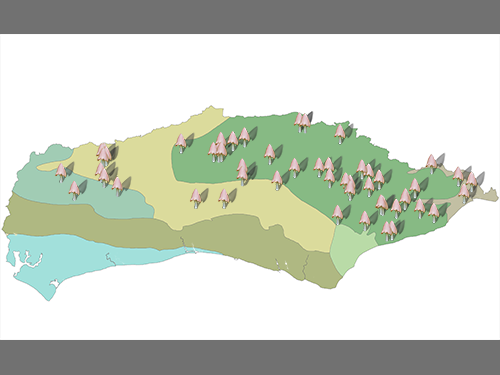
Map showing wealden distribution of Pink Waxcap Porpolomopsis calyptriformis records in Sussex
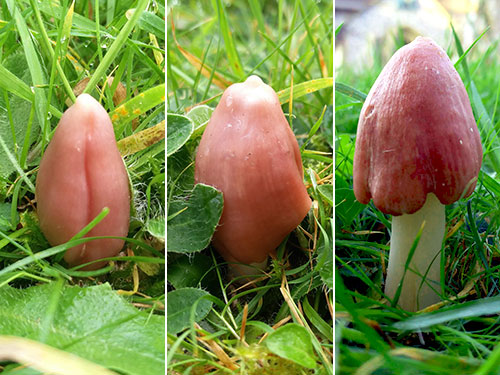
Young Pink Waxcaps pushing their way up through the sward. Note the distinctive cap shape.
Photos: Clare Blencowe
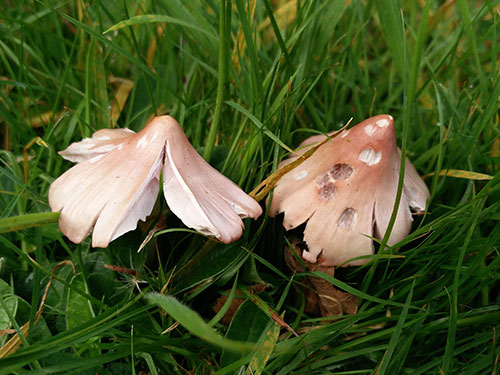
Older Pink Waxcaps in the classic ballerina pose.
Photo: Clare Blencowe
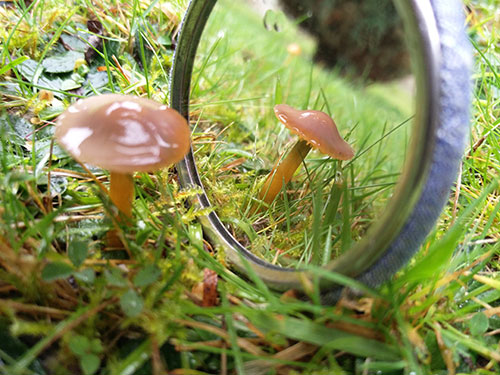
Possible confusion species: Parrot Waxcap Gliophorus psittacina, which can turn pink after a frost.
Photo: Clare Blencowe
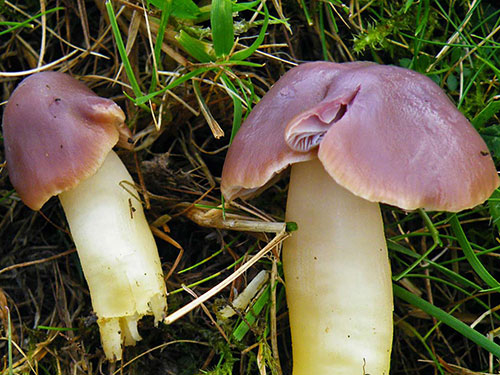
Possible confusion species: Jubilee Waxcap Gliophorus reginae, which can have a purplish cap and whitish stem.
Image: © Rob Foster [CC-BY-NC]
via Fungi and Lichens of Great Britain and Ireland
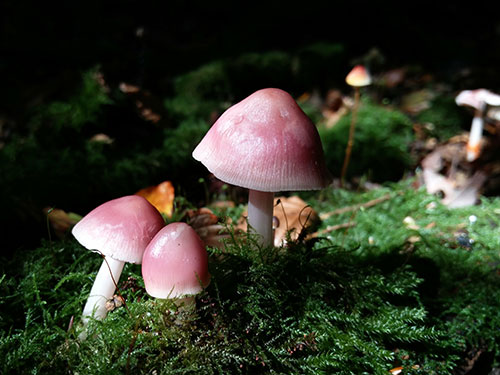
Possible confusion species: Rosy Bonnet Mycena rosea (although this is a woodland species).
Photo: Clare Blencowe
You may know the Pink Waxcap Porpolomopsis calyptriformis by its other common name: ‘the ballerina’. It is classified as ‘vulnerable’ on the IUCN Red List with a decreasing population trend. The UK is a relative stronghold for this species, which is found only in Europe, and we are lucky to have a number of known sites for it in Sussex. But, in common with many waxcap species, Pink Waxcap Porpolomopsis calyptriformis is vulnerable here too: threatened by habitat loss and inappropriate management. Having up to date records is therefore vital to help protect our remaining waxcap grasslands and inform the management of sites where waxcaps occur.
Waxcaps (Hygrocybe sensu lato) are the “H” in the special group of CHEGD fungi which are mainly found in unimproved, semi-natural grassland with long continuity in management (typically grazing or mowing) which keeps the sward short. You can find a list of CHEGD fungi in the recently published JNCC Guidelines for the Selection of Biological SSSIs: Chapter 14, Non-lichenised Fungi.
Waxcaps can be recognised by their relatively widely spaced, thick and waxy gills. Many species are brightly coloured in red, orange or yellow; but waxcaps also come in various shades of white, grey and brown. They were at one time all grouped together in the genus Hygrocybe. However, modern molecular research is changing our understanding of many fungal species and this is certainly the case with waxcaps which are now placed in a range of different genera. The Pink Waxcap, which you’ll still find listed in many reference texts as Hygrocybe calyptriformis, now has a preferred scientific name of Porpolomopsis calyptriformis.
The new generic name is a somewhat esoteric reference to this species’ acutely conical cap - a distinctive feature which sets it apart from most other waxcaps. Catch this species when it’s just starting to fruit and you’ll find it thrusting up through the sward like a spear. Later the cap will expand in the classic ballerina pose, flashing its pinkish-white gills and whitish stem. The finely radially fibrillose cap usually splits as the cap expands.
Pink Waxcap Porpolomopsis calyptriformis is a pretty unmistakeable species, once you get your eye in, and can be readily identified from field characteristics. Look for it in churchyards where the grass gets regularly mown. Like other waxcaps, it favours a lush mossy sward. It can be found also in traditionally managed grasslands, where nutrient inputs are low and regular grazing keeps the sward short.
It’s worth being aware there are a couple of other waxcap species that can take pink forms.
Parrot Waxcap Gliophorus psittacina, after a frost, can turn a pinkish colour. But you can easily separate out this species by its slimy cap and the green tones that should persist on the stem.
The recently described Jubilee Waxcap Gliophorus reginae (a relative of the Parrot Waxcap) could possibly be a source of confusion, as it can appear with a pink cap and white stem. But remember the distinctive conical cap of Pink Waxcap Porpolomopsis calyptriformis and you shouldn’t go wrong. Worth mentioning also that Jubilee Waxcap Gliophorus reginae has not previously been recorded in Sussex, so it’s not a species you’re very likely to meet. Please get in touch if you think you have found it!
One other species which isn’t a waxcap, but which can look superficially similar, is the Rosy Bonnet Mycena rosea. This is a woodland species but you might find it popping up in grassland at the edge of woodland. Again, this one lacks the distinctive conical cap shape. And it smells strongly of radishes!
In the JNCC Guidelines mentioned above, Pink Waxcap Porpolomopsis calyptriformis is identified as a ‘high diversity indicator’. So if you find it, keep your eyes peeled for other waxcap species.
Sussex Biodiversity Record Centre is hosting a new online ‘grassland waxcap identification support tool’, produced by Clare Blencowe as a hobby project, which is available now for field testing. It covers all the British grassland waxcaps, so why not make a trip to a churchyard or unimproved grassland near you this Autumn, find yourself some waxcaps, and give it a try: https://sxbrc.org.uk/recording/keys/waxcaps/ If you do come across the Pink Waxcap Porpolomopsis calyptriformis please record the details of your sighting (ideally with photographs) on iRecord.
Every month it is our aim to highlight a species that is “in-season” and, although not necessarily rare or difficult to identify, has been highlighted by our local recording groups as being somewhat under-recorded and for which new records would therefore be welcomed.
If you or your recording group are aware of species such as this then please contact Bob Foreman.